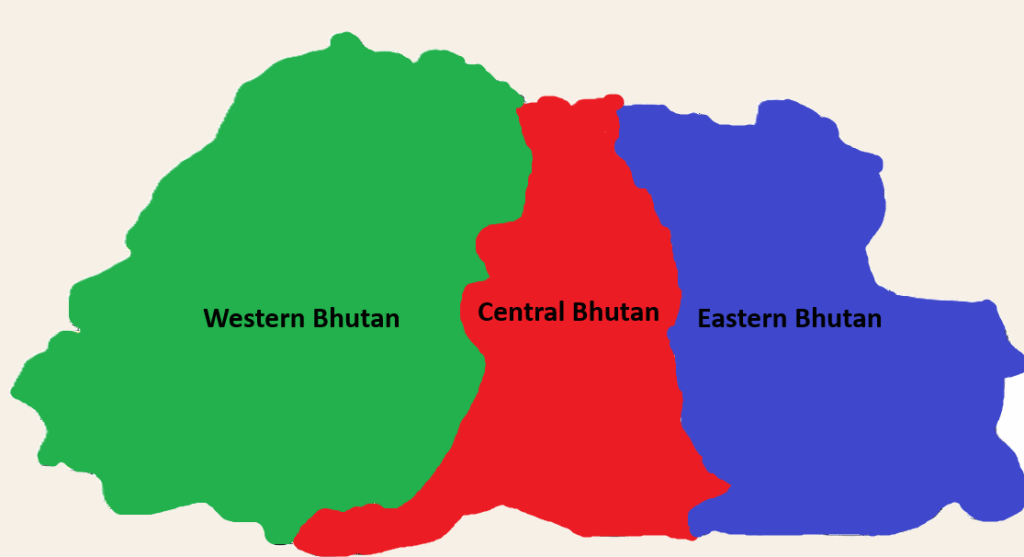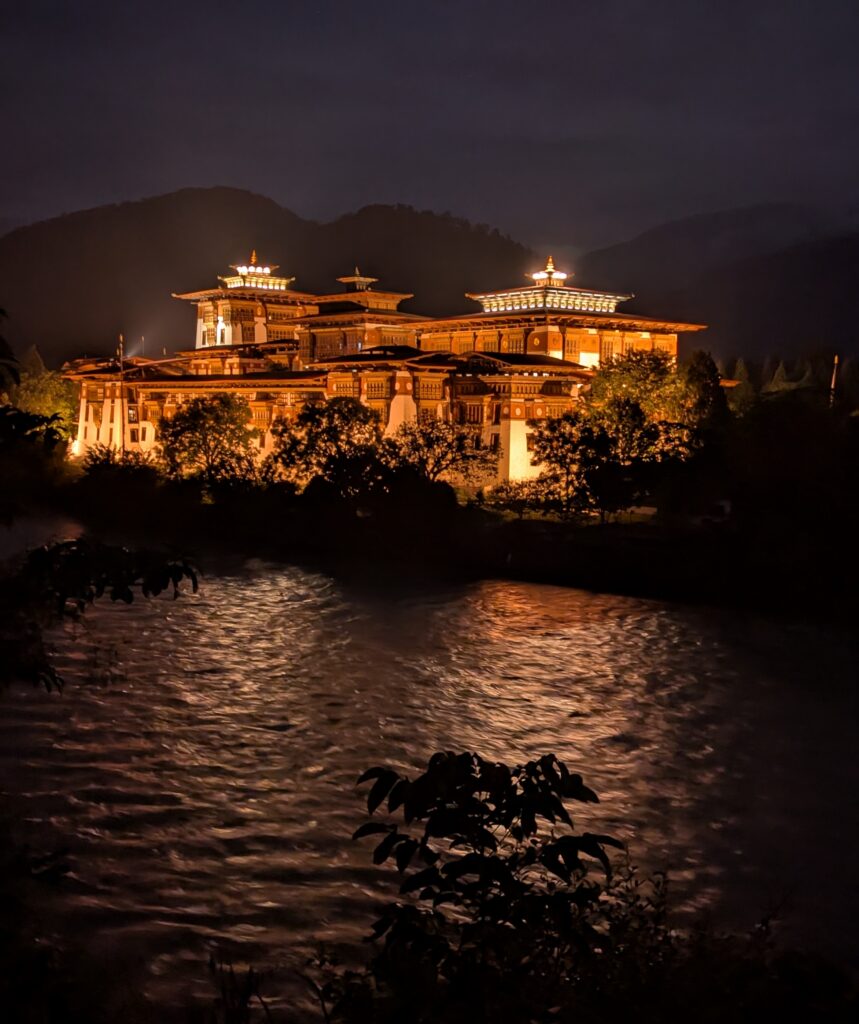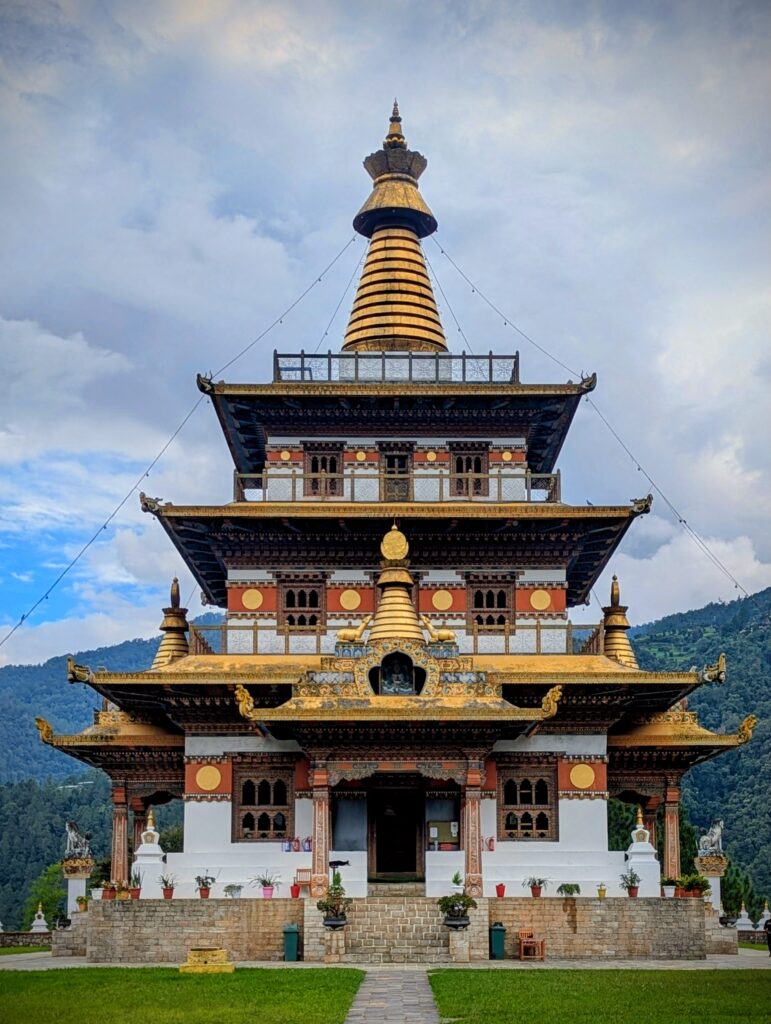Western, Central & Eastern Bhutan

Western, Central and Eastern Bhutan offer experiences in their own unique ways. Before planning your trip, ensure you have a clear idea of where you want to spend your time. It is possible to cover all three regions in two weeks if you skip any serious trekking.
- Western Bhutan: This is where most of the tourists go. If you are taking an international flight, this is where you will land. You can visit the most touristy places like Paro, Thimphu, and Punakha. Some go to Phobjikha and Haa Valley.
- Central Bhutan: As you move to central Bhutan, the number of tourists reduce drastically. All sights have no entry price, and you can easily avoid crowds. Even in shoulder seasons, you can have monasteries and dzongs to yourself. Bumthang is considered the spiritual heartland and birthplace of Buddhism in Bhutan. It has many sacred Buddhist sites and monasteries.
- Eastern Bhutan: After visiting Buddhism-related sights in Western and Central Bhutan, head East to dive deeper into Bhutanese culture. You can head to remote villages and see weavers, pottery and how the traditional art has been kept alive. Do not worry, you will still get Buddhism in Eastern Bhutan. You will not see many tourists here, and even in peak season, you may have monasteries and dzongs to yourself. You will encounter people whose native language isn’t Dzongkha. You can head to Merak and see nomads who are also yak-herders.
My Itinerary and Important Tips (West to East)
The map above shows where I travelled in Bhutan. The red markers are where I spent the night, and the purple markers are my day trips or stops on the way.
My focus was to explore Buddhism, villages and the culture of Bhutan. I had 12 days to do that. Therefore, I landed in Western Bhutan and started moving to Central Bhutan to learn about Buddhism. I left the cultural exploration for Eastern Bhutan. This is a rough sketch of my itinerary:
Paro and Thimphu
I did not want to spend a lot of time in Paro and Thimphu. Tourists spend 3-4 days in these cities. One could spend even longer and do a lot of day trips.
Tiger’s Nest (Paro Taktsang) is the most popular sight in Butan. However, it would have required a lot of time. I decided to visit Kyichu Lhakhang in Paro and head to Thimphu right away, where I spent 1 day and 2 nights. I visited Changangkha Lhakhang, Taikn Preservation Centre, Zilukha Nunnery, and Buddha Point.
Tips:
1.) Go to Dechenphodrang monastery, it is free, and tourists don’t go there.
2.) All Tour operators would include ‘Simply Bhutan’ in their itinerary. If you are short on time, skip that. You get a guided tour by one of their guides, but there isn’t much to see there, and the experience is short. If you decide to skip that, let the guide know in advance, and you can negotiate Nu 1000 from your tour package (if you are going for an all-inclusive package).
3.) If you have a day to spare, go to Dodedrak Buddhist Monastery. You need to hike up there, and you can also stay in the monastery.
Punakha


One day is enough for Punakha. Tourists usually go to Punakha Dzong, Chimi Lhakhang, and the Suspension bridge. If you have more time, you can go to Nalanda Buddhist University and other small temples and a nunnery nearby. Make sure to ask if the road to these places is good.
Tips:
1.) Make sure to head out when it gets dark and catch the view of the Dzong. Look for Punakha Dzong View Point on Google Maps. You will have to walk a couple of hundreds meters south (away from the town) from there to get the view.
2.) Go to Khamsum Yulley Namgyal Chörten. It is a 60-90 minute hike. I went there in September and I was the second tourist of the day at 3 PM.
3.) Punakha Dzong is one of the most beautiful buildings in Bhutan. If you are heading to Phobjhika, you may want to consider skipping Punakha Dzong and seeing other sights. On your way to Phobjhika, you can visit Wangdue Dzong. It is free to enter and will have no tourists.
4.) Get off the road and walk 30 minutes to the parking of Chimi Lhakhang. You will see lots of souvenir shops, mainly phallus and also Mandalas. If you are heading East, the souvenir shops will get harder to find.
Phobjikha Valley
You can spend one day in Phobjikha Valley. It is also common to visit this valley as a day trip from Punakha. The main attractions are Gangtey Monastery, Gangtey Nature Trail and Black-necked Crane Visitor Centre.
Tips:
1.) If you don’t live near mountains, add an extra day from Phobjhika if you are in Punakha. You go to 3000 metres, which is a good escape to higher altitudes from Punakha at 1900 metres.
2.) It is possible to stay at Gangtey Monastery. You can arrange a personal session on Buddhism and also attend evening prayers. In some cases, it is possible to join the monks for meditation.
Bumthang
Bumthang is considered the spiritual heartland and the birthplace of Buddhism in Bhutan. It has many sacred Buddhist sites and monasteries like Tharpaling Monastery, Jambay Lhakhang, Kurjey Lhakhang, and Kungzandra Monastery. You can also visit Burning Lake here. You can spend 2 – 4 days here, depending on how many hikes and valleys you want to visit.
The main action is in the Jakar Valley. However, do visit the secluded Tang Valley. Stop at Burning Lake on your way in or way out.
Tips:
1.) Visit Drapham Dzong ruin. You will have to drive through an unpaved road. Tour operators don’t have this in their itinerary, so make sure you mention this place to them before finalising the itinerary. On your way, stop at Thangbi Lhakhang.
2.) Visit Tang Valley. Either drive or
- Do a 6-8 hour hike from Jakar Valley. End the hike at Pema Choling Nunnery. Your car can pick you up from here.
- Hike from Padtselling Monastery (a bit outside Jakar Valley) to Kungzandra Monastery (a bit outside Tang Valley). This will be a longer hike. So, start early.
- Drive till Burning Lake, then hike to the nunnery. And drive through the road till you reach the starting point of the Kungzandra Monastery hike.
Download Maps.me for hiking routes.
Mongar and Lhuntse
Mongar is a 5-hour drive away from Bumthang. It is one of the major towns in Eastern Bhutan. It is on the way to the further East. Stop here for one night if you are short on time. If you have more time, stop for two nights and do a day trip to Lhuentse, Khoma Village and Lhuntse Takela, which is a 52 metres high statue of Guru Rinpoche, also known as the Second Buddha. You can also spend a night in Lhuentse.
Tips:
1.) It is a fantastic drive from Bumthang to Mongar. Stop at Thrumshing La pass (3750 m), the second-highest pass in Bhutan. On a clear day, you could catch a view of Gangkhar Puensum (7570 m).
2.) Also, stop at Namling waterfall on the way.
Trashigang and Trashiyangtse
Trashigang should be your base to visit Trashiyangtse, Gom Kora, and Bumdeling Wildlife Sanctuary. In Trashiyangtse, you can visit the temple of Gom Kora, which is a sacred place for Buddhists. Guru Rinpoche, the second Buddha, is said to have subdued a demon, trapping it in a rock. When I was there, various VIPs were attending rituals here. You can also visit the College of Zorig Chusum, where students are taught 13 types of arts, like building sculptures, painting, creating Bhutanese wooden frames, etc. You can walk into the classrooms and interact with students.
On your way back, you can visit Doksum Village to see women weaving traditional Bhutanese fabric.
You can visit further east from Trashigang to Radi, famous for rice fields, Rangjung, known for its beautiful monastery and Merak, where you meet Brokpas, who are yak-herding nomads.
Tips:
1.) Some tours suggest a day trip to Merak, but try to spend a night there. This will give you enough time with Brokpas and also stop in Rangjung and Radi.
2.) Exit to India from Samdpur Jhonkar. Your tour operator will be able to arrange a ride to Guwahati Airport (Two and a half hours from the border). You can fly to Delhi from there (60 – 70 Euros) and then to your destination. This is faster than going back to Paro via a domestic flight. And the flights to your destination are probably cheaper from Delhi than from Paro.
Leave a Reply